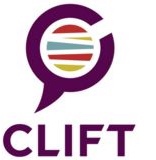By Nancy Clift
Bridging the generation gap is a challenge in any age. Yet marketers trying to reach the Millennial cohort of today are finding it especially difficult to crack the code. Despite all the information and research available about their attitudes, habits, values, concerns, and desires, marketers are still susceptible to stereotypes that oversimplify and obscure who these young people are and what they want.
Some of the mystery about how to reach Millennials stems from the radical shifts in the environment in which Millennials (generally considered people born between 1980 and 1996) must confront the developmental challenges facing every up-and-coming generation. The problem is not that Millennials are especially mysterious, but that the challenges of going through these developmental phases are very different from those that Gen X and Boomers--who grew up in very different cultural and economic circumstances--faced in their early adulthood. This difference is further compounded by revolutions in communication and technology that affect the way Millennial respond to those developmental challenges.
While there has always been a “generation gap” separating people from different age cohorts, the current divide is arguably wider and deeper because it grows from a significant shift in the way people interact.
The Primary Problem
Recently, I was sitting in a strategic planning session led by TAG consulting, and they started to talk about how people communicate. As the facilitator spoke, a light bulb turned on for me. I could suddenly see something about these generational differences that made so much sense that I wanted to share it with you.
For countless centuries, the primary mode of human communication was oral. People relied directly on other people, e.g. town criers, travelers, minstrels, etc., to obtain their information. It required knowledge of the messenger to determine the credibility of the information
Then with the advent of the printing press – Gutenberg’s early press was mid-1400’s -- people relied more and more heavily on the written word to learn about the outside world. Information was easier to disseminate, and its credibility depended more on the facts. Advertisers used text to communicate the benefits of their products and services. Take a look at this example of an early car commercial – https://www.youtube.com/watch?v=kCbuMIDcAYQ. You will notice it focuses primarily on facts and information about the automobile. They were not sure how to use the new medium of television yet in 1950, so stuck with the old fact-based language.
During the baby boom, television transformed the way we communicate as we began to understand how to use the visual medium, and image took on the primary role. In advertising, for example, image became primary, and for Baby Boomers and Gen-Exers, image became the primary language. (Contrast this car commercial from the 1990s with the previous ad https://www.youtube.com/watch?v=3Vb8pxpbRUs). Brand logos conveyed volumes through a single symbol or image – think the red Betty Crocker spoon -- and brand created credibility about a product’s quality, consistency, etc.
Then with the internet and the exponential growth of social networking, along came the interactive era of today. Millennials have been raised with a different primary language from that of their parents and grandparents— they are used to having information at their fingertips, as we are all aware. But it’s more than that – Millennials’ primary language is interactive. They get their information and insight by interacting with one another. They are used to taking in the opinions of many,
Interestingly, for the first time in history, people who are alive at the same time have three different primary languages, making communication and understanding one another much more complex. How many time shave you heard a baby boomer complain about how much their kids are texting these days?
Interacting with Millennials
So, for Millennials, brand is about relationships and interaction. Word-of-mouth and interaction with brands is critical. Social media helps to form and re-form in an instant the image of a brand. A company makes a political misstep and their brand image does a flip-flop.
According to an article in Ad-Week, Norty Coehn, founder and CEO of Moosylvania said “This is a group that will adopt brands – if you can create a friendship with these consumers, you really take it to the next level. They will go to great lengths to support you. They will go to great lengths to support you.” (read more of article “Attention Brands: this is how you get Millennials to like you” http://www.adweek.com/news/advertising-branding/attention-brands-how-you-get-Millennials-you-160575)
Consumer goods and services companies should be asking themselves how to form relationships with these consumers – personal relationships that can be nimble and meet their new and changing needs. One of the best—and most essential--ways to get to the heart of it is to talk to the consumers themselves. This brings the relevance of qualitative consumer research to a whole new level for this generation.
The old methods are mostly not going to work – the old brand logos and stories do not resonate unless they interact with these young people. New listening is needed, new responsiveness and personalization will be powerful – and keeping on top of the zeitgeist to be sure that whatever is buzzing on social media is connected to the brands, products and services, is vital to the long-term health of todays companies.
As an afterthought, consider this: Trying to communicate with a person who doesn’t speak your language is a frustrating experience at best. Without a shared vocabulary, the parties involved must play charades--i.e. rely on the movement of their body, gestures and hand signals--to get even the simplest of messages across. It is practically impossible to carry on a conversation. Yet that is precisely what some of America’s leading companies find themselves doing when trying to connect with today’s Millennial generation.

